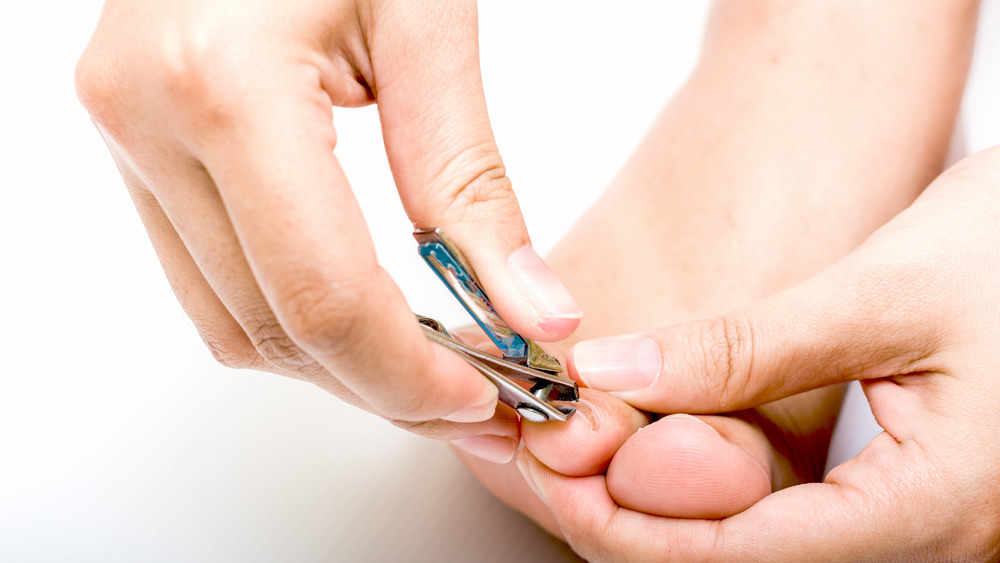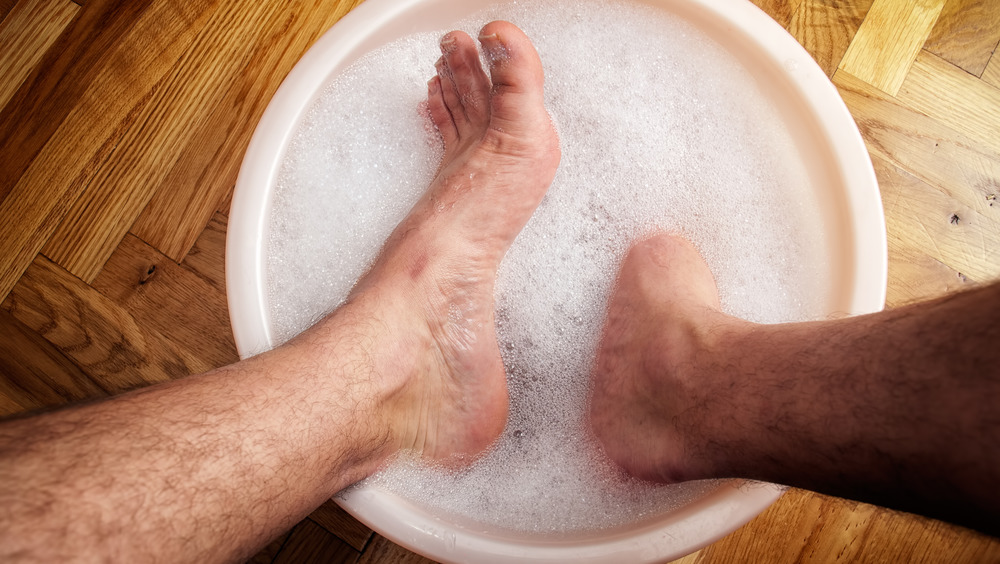Why Cutting Your Toenails This Way Is Riskier Than You Think
You've likely never thought about the way you cut your nails. However, certain techniques could potentially result in an ingrown toenail.
Ingrown toenails occur when the side of the toenail grows into the skin of the toe, causing pain and inflammation. The best way to avoid getting an ingrown toenail is to cut the nail straight across, using nail clippers or manicure scissors (via Healthline). Afterwards, you can use an emery board to file down any sharp edges. It's important not to cut your toenail too short, too rounded, or too pointy. This could cause the nail to grow back into the skin.
While everyone's nails grow at a different pace, you shouldn't cut them too frequently either. This could cause your toenails to end up being too short, which could increase the likelihood of developing an ingrown toenail. Instead, wait until your nails grow out a little. This will allow you to cut them at the recommended length of 1 to 2 millimeters.
How to treat an ingrown toenail
Ingrown toenails are painful and can even result in infection. Symptoms of an ingrown toenail include redness, swelling, and tenderness (via WebMD). If your ingrown toenail isn't infected, you can treat your symptoms at home by soaking your foot in a bath of warm water and epsom salts for 15 minutes at least three times a day. Afterwards, you can apply antibiotic ointment, like Neosporin, to your toe and protect it with a bandage.
If your ingrown nail is infected, however, you should schedule an appointment with a podiatrist. You'll know if your toe is infected if it becomes warm to the touch or begins oozing pus or blood. In that case, your doctor will prescribe antibiotics and perform a matrixectomy, an in-office procedure in which part of the toenail is removed.
"The only painful portion is the anesthetic injection administered to the site before the procedure," New Jersey-based podiatrist Velimir Petkov told Allure. "Once the affected toe and the area around it get numb, you should feel no pain and be comfortable." In the days following your procedure, your doctor is likely to recommend daily foot baths with epsom salt and keeping it covered until it heals.


